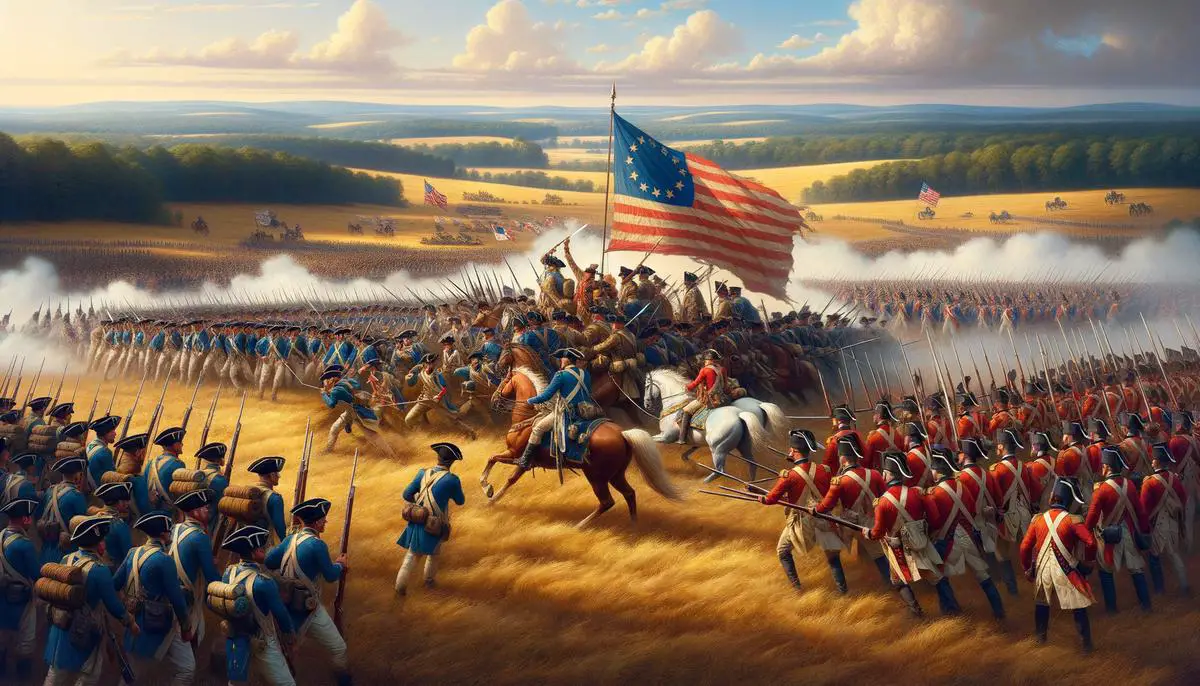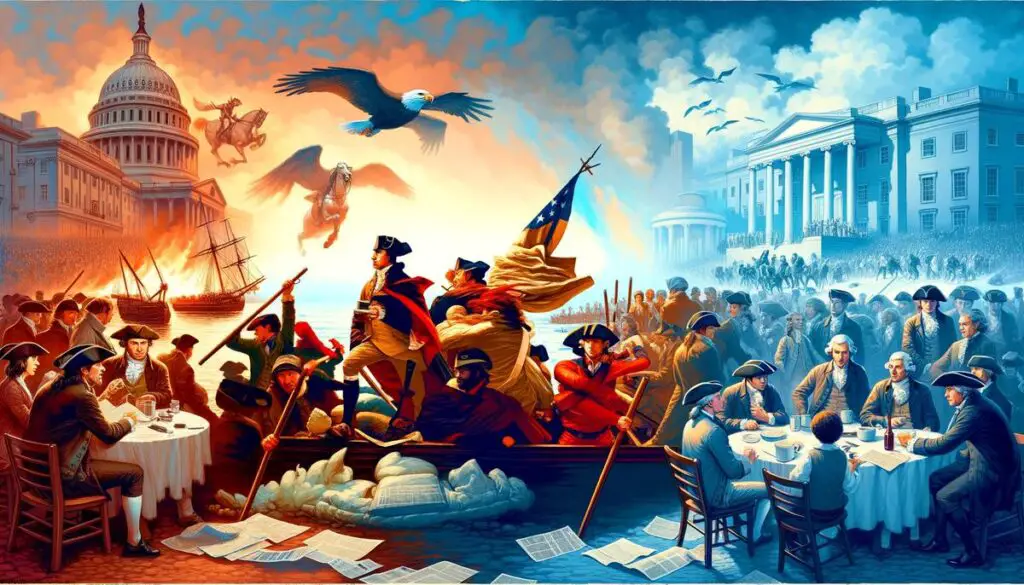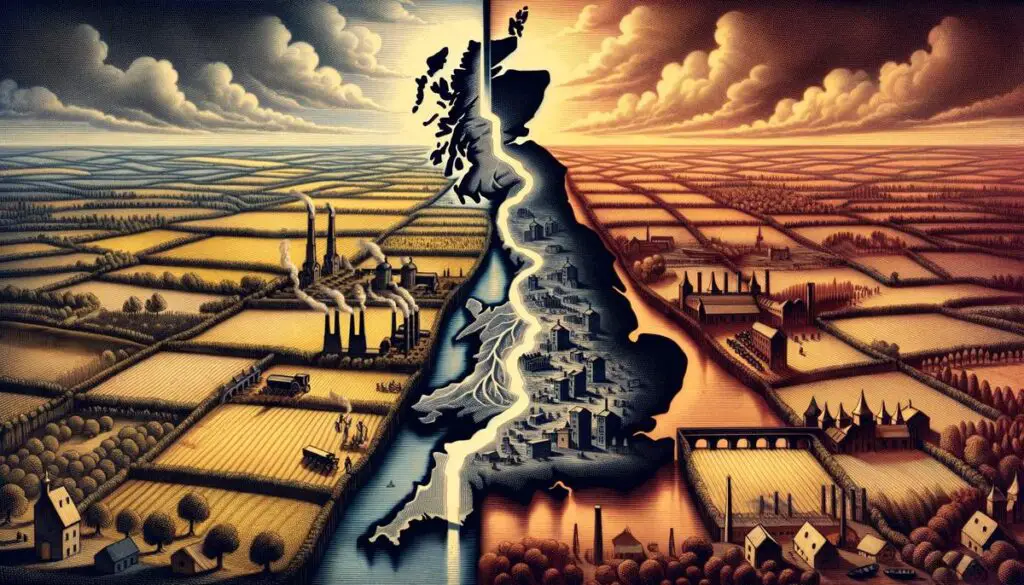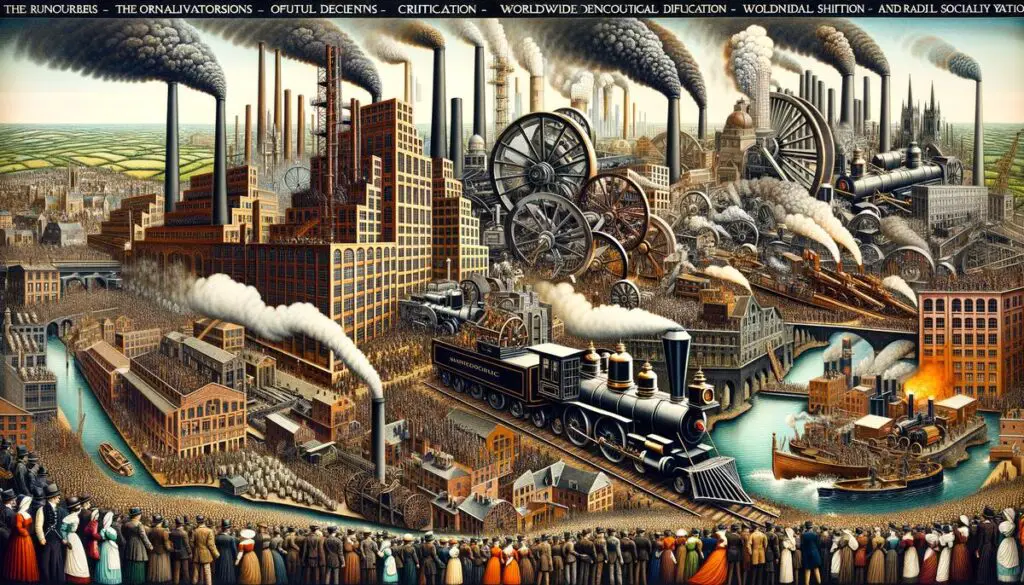Causes of the American Revolution
The Sugar Act of 1764, designed to help Britain recover from the financial strain of the French and Indian War, imposed a duty on imported sugar and other goods into the colonies. This legislation aggravated colonial merchants, who felt the economic pinch and resented the imposition without their consent. Shortly thereafter, the 1765 Stamp Act required the use of paid stamps on legal documents, newspapers, and even playing cards, igniting dissent among colonists who saw this as a direct attack on their freedoms.
Groups like the Sons of Liberty formed in direct response to the Stamp Act, symbolizing a radical public turn from frustration to active protest. The act united disparate colonies in shared opposition, setting a precedent for collective action against perceived overreach by British authority.
In 1767, the Townshend Acts introduced new taxes on paper, tea, glass, and other products, exacerbating the growing bitterness. The introduction of these duties demonstrated a pattern of parliamentary insistence on taxing the colonies, which perceived it as economic warfare.
Harsh enforcement of these laws, including quartering troops in colonial homes and arbitrary seizures of goods, stepped over personal boundaries, further endearing revolutionary ideologies to colonists. The Boston Massacre of 1770, where British soldiers killed five civilian men, became a poignant moment, galvanizing an outraged populace and ending in the repeal of the Townshend duties except on tea, which Britain retained to assert its right to tax the colonies.1
The Tea Act of 1773 attempted to rescue the faltering East India Company by granting it a monopoly on tea sales in America. It sharply lowered the price of tea but strategically retained the tax, antagonizing colonists further. Reaction culminated in the Boston Tea Party where activists, clad as Native Americans, dumped entire shipments of tea into Boston Harbor as defiance turned theatrical and symbolic.
As punishment, the British authorities enacted the Coercive Acts of 1774, which closed Boston's port and revoked Massachusetts's charter of self-government, attempting to isolate Boston and quash revolutionary fervor. Instead, these acts prompted the formation of the First Continental Congress, binding the colonies closer in their opposition against Britain.
The American plea for liberty intensified with measures that sought not just to protest financial imposition but champion broader principles of self-governance and rights. As hopes of reconciliation dimmed, resistance paths carved by economic strife and political disdain spiraled to armed conflict at Lexington and Concord in 1775, where the first shots of the American Revolution rang out, echoing the determined spirit of a burgeoning nation.

Key Battles and Turning Points
The Battle of Bunker Hill, which took place on June 17, 1775, was one of the earliest and most iconic confrontations of the American Revolution. Rather than demonstrating colonial military prowess—since the militia ultimately retreated—the battle proved momentous for other reasons. It demonstrated American resolve and highlighted British vulnerabilities. Despite their technical victory, British forces suffered devastating losses, nearly a third of the deployed men, including numerous officers.2 The heavy cost sowed doubts within British leadership about the feasibility of subduing the colonies through force alone.
As the war surged on, George Washington daringly crossed the Delaware River on the night of December 25-26, 1776, to attack Hessian forces in Trenton, New Jersey. The surprise tactic secured a crucial American victory and significantly boosted colonial morale during a bleak phase of the war.
Another pivotal episode unfolded in October 1777, with the American triumph at Saratoga. This victory became the turning point of the Revolution. It decimated a significant British force and convinced France—which had been covertly supporting American forces—to enter the war openly on the side of the colonies, bringing invaluable military aid and resources that intensified pressure on British operations.
The final major engagement at Yorktown, Virginia, truly tipped the balance. In September 1781, General Washington, aided by French land and naval forces under the command of Admiral de Grasse, laid siege to Yorktown where Lord Cornwallis' army was ensconced. Cut off from rescue by the dominant French fleet in the Chesapeake Bay, Cornwallis surrendered on October 19, 1781. This capitulation effectively ended major hostilities and forced British policymakers to grapple with the unsustainable cost and dwindling prospects of their campaign to rein in the colonies.
Each battle folded into the next, creating a mosaic of American resolve and strategic ingenuity—a phenomenon woven through with threads of allied support and enemy missteps. These key encounters shifted momentum on the field and deeply influenced diplomatic, logistical, and strategic elements of the Revolutionary War—a fact borne out by the 1783 Treaty of Paris which acknowledged American independence and marked a new era on the global stage.

International Influence and Support
France, Spain, and the Netherlands each played uniquely critical and supportive roles in the American struggle for independence, effectively intertwining the fate of the American colonies with the broader geopolitical struggles of Europe. France, in particular, emerged as an indispensable ally whose contributions extended beyond mere military assistance to substantial financial support and critical diplomatic backing.
France began its support quietly, supplying the American rebels with gunpowder and arms as early as 1775. This covert aid was crucial in sustaining the Continental Army during its formative years and bottleneck stages of supply shortages. After the American victory at Saratoga in October 1777, France was convinced of the prudence of a formal alliance. In 1778, France signed treaties of alliance and commerce with the Americans, leading to open hostilities with Britain.3
Spain, although not immediately entering into an official alliance with the United States, was indispensable in its less conspicuous support.
- Financial aid flowed from Spanish coffers, funneling through Havana to support the siege of Yorktown.
- Spanish Louisiana under Governor Bernardo de Gálvez opened up a crucial corridor for supplies.
- Spanish forces managed to divert British resources through campaigns in Florida and along the Mississippi, further straining British military focus.
The invaluable naval assistance France provided redefined the war's landscape, particularly at the Battle of the Chesapeake in 1781, which sealed the success of the Yorktown campaign. French naval forces under Admiral de Grasse proved instrumental in blocking British rescue to Cornwallis' besieged troops, leading directly to his capitulation.
The Netherlands' involvement, relatively muted yet pivotal, spanned the spheres of financing and military conflict. The Dutch supplied weapons and loaned critical funds to finance the American war effort but also suffered direct repercussions, finding itself entangled in war with Britain by 1780 after the British intercepted evidence of Dutch arms supplying Americans. This helped underscore the international dimension of the conflict by dispersing British military resources across more global confrontations and lifting pressure off American forces.
The contributions of France, Spain, and the Netherlands were integral to the sustenance and success of the American Revolution. More than just military triumphs, these alliances underscored a shared European interest in curbing British dominance, rendering America's fight a vista into global realignments and the emergent challenges to colonial empires. These developments influenced the outcome of the war and reshaped international relationships in its wake.

Impact of the Revolution on Society
Upon securing independence, the United States faced the task of forging a society from the diverse ideological undercurrents that had fueled its revolution. While the allure of liberty and self-governance resonated deeply, it cast varying shadows upon the nation's social landscape, ushering shifts in political thought, societal structures, and cultural ideologies, often with paradoxical outcomes.
One significant area of post-Revolutionary reconfiguration was in political thought. The notion of democracy — a government of, by, and for the people — stood at a nascent stage, viewed by many as an experimental governance model. Figures like Jefferson and Madison spoke eloquently on liberty and the citizen's role in governance, yet the reality was marred by contradictions. In its inception, the democratic ethos embraced by America did not extend to all; its blessings were mainly reserved for land-owning white males. This selective application of democratic principles showcased an inherent struggle within American society that would challenge its moral and ethical boundaries for centuries.
The hierarchical structures of society also faced recalibration, though change was gradual and uneven. The Revolution disrupted traditional aristocratic norms, replacing them with merit-based elements of republicanism. However, entrenched social hierarchies did not dissolve overnight. Individuals of substantial wealth and influence continued to wield considerable power in the political and economic spheres.
For enslaved individuals and Native American tribes, the Revolution's promise of liberty presented a stark hypocrisy.
- While rhetoric soared about unalienable rights, slavery persisted as an institution utterly opposed to the founding ideals.
- The Revolution neither addressed nor ameliorated their challenges; instead, for many, it fortified the systemic barriers they faced.
- Slavery in America would burgeon into a more deeply entrenched system post-Revolution, despite the growing abolitionist movements spurred by the paradoxical nature of a nation predicated on freedom yet built on bondage.
Women's roles also witnessed subtle shifts. The politicization of the domestic sphere, recognized through the Republican Motherhood ideal, suggested that the progenitors of future citizens carried indirect influence in shaping the republic's values.4 Though confined predominantly to roles within domestic boundaries, women like Abigail Adams began articulating calls for expanded rights, foreshadowing future struggles for gender equality.
The Revolution also fractured traditional allegiances among Native American tribes. While some tribes allied with colonists, others sided with the British or aimed to remain neutral. Post-Revolution, many Native communities found their lands further encroached upon as the new nation expanded westward, disregarding earlier treaties and continuing a pattern of displacement and violence. This often led to decimated populations and cultures thrown into jeopardous transitions.
While American independence heralded a significant shift in notions of governance and human rights, it was also a harbinger of deep and continuing conflicts over emergent ideologies. The way these frictions played out set frameworks for the dynamic process of political and social evolution—a process marked by strikes and gutters as America edged towards defining "We the People" across an ever-broadening spectrum. Set against a backdrop of revolutionary ideals, the dawn of the United States was clouded with contentious debates and transformations that would continue to define its societal fabric for decades—and centuries—to come.

Legacy and Historical Interpretation
Over time, the American Revolution has been interpreted and commemorated in various ways, influenced by the socio-political needs and perceptions of subsequent generations. Initially, the Revolution was memorialized as a unifying event, etching heroes like Washington and Jefferson into the national consciousness. Sites such as Independence Hall and battlegrounds were sanctified to promote a sense of shared heritage, centering around patriots fighting for self-determination against a tyrannical empire.
As historical scholarship deepened, so did the intricacies of the revolutionary story. The 19th century's Civil War and Reconstruction era reinterpretations began to question the inclusiveness of its ideals, particularly concerning issues of race and enslavement. The Emancipation movement attached itself to the revolutionary rhetoric of liberty, using it to critique the continued existence of slavery.
In the 20th century, deeper critical analysis unveiled the myriad interests and identities involved in the Revolution. Historians emphasized the roles of Indigenous peoples, African Americans, and women, painting a more inclusive but contentious picture. This era of scholarship examined the economic motives and class dimensions that underpinned revolutionary motivations, revealing wider global changes and internal class struggles.1
Educationally, the Revolution's portrayal has evolved, influencing how generations of Americans perceive their origins. Civic education has treated the Revolution as the birth of the nation, weaving it into curricula. Yet now, curricular approaches are broadening to embrace critical perspectives that reflect a multiplicity of experiences and interpretations.
Public memory and commemorations have also reflected this shift from uniformity to plurality. Rather than solely monumentalizing founding fathers, recent commemorations have aimed to tell a fuller story including the often-excluded voices of Native Americans, African slaves, and Loyalists.
Artistic renderings have played a significant role in disseminating varied interpretations of the Revolution. They provide cultural spaces where the public can engage with an emotional and humanized past that academia or formal education might not effectively convey. For example:
- Hamilton, the popular Broadway musical, reimagined the founding fathers as people of color, highlighting the roles of immigrants and the complexities of the revolutionary era.2
- Historical novels like Johnny Tremain by Esther Forbes have brought the Revolution to life for young readers, fostering an early connection to this pivotal moment in American history.
The Revolution is now understood not just as a sequence of events but as an ongoing dialogue about the meanings of liberty, governance, and rights that the American experience continues to grapple with. Current debates around monuments, history education, and national identity show that the lessons and legacies of the American Revolution are still actively shaping American culture and politics.
While early commemorations aimed to polish a unified story of triumph and democratic ascent, contemporary interpretations acknowledge a more contested memory—one reflective of an ongoing struggle to define whose freedom the Revolution was fought for and what its enduring legacy should be in America's story. This evolution reflects an understanding that history is a living dialogue that continues to influence how a nation sees its past, shapes its present, and imagines its future.

- American Revolution Overview - April 25, 2024
- 9/11 Terror Attacks - April 24, 2024
- Watergate Scandal - April 23, 2024




